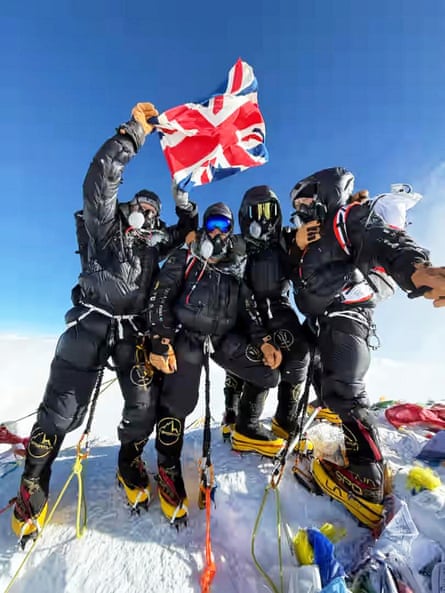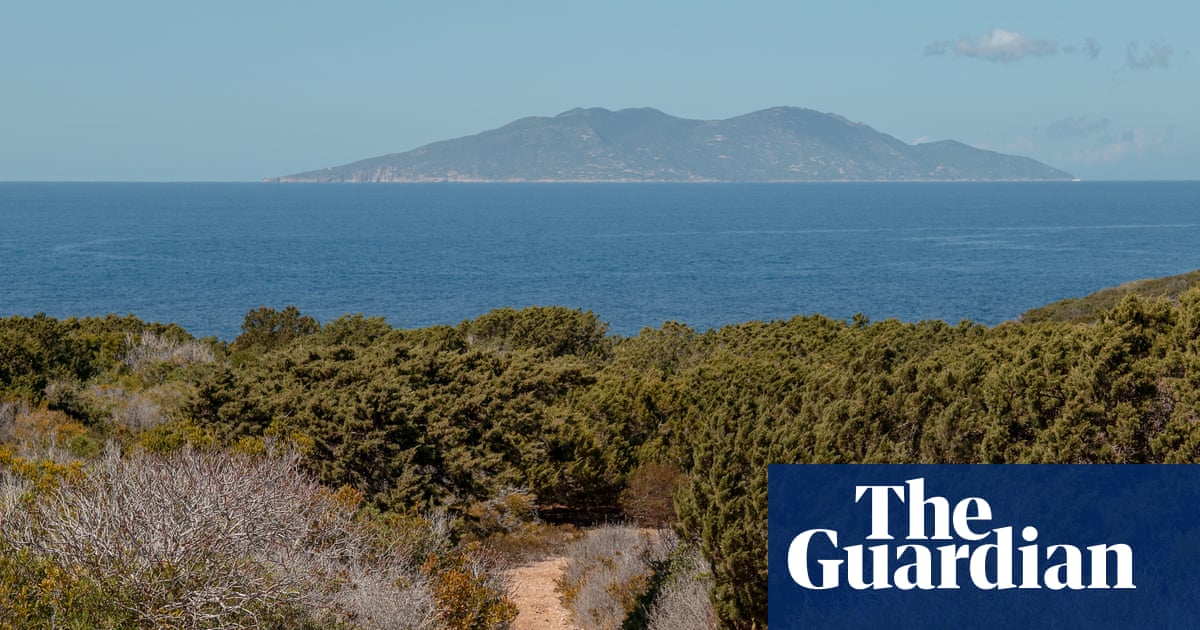There is nothing unusual about records being broken on Mount Everest. But last week, two sets of climbers turned heads with ascents that many had never thought possible: they went straight up from sea level to the world’s highest summit in less than a week.
On Wednesday, a team of four UK climbers, all ex-special forces soldiers, summited Everest having landed from London just over four days earlier. The following day, US-Ukrainian climber Andrew Ushakov said he had gone from New York to the top of Everest in under four days.
With Everest standing at a staggering 8,849 metres, scaling safely to the top usually requires spending several weeks acclimatising at a lower altitude, normally Everest base camp, so the body can adjust to the lower level of oxygen.
Without this acclimatisation, most climbers would sicken or die in the final stages of summiting due to the thin oxygen levels above 8,000 metres, known as the “death zone”. Altitude sickness accounts for almost as many deaths as falls and avalanches on Everest.
But using new methods and technologies, both the UK team and Ushakov acclimatised before even arriving on the mountain in Nepal, meaning they could skip base camp entirely.
Some expedition leaders have claimed these pre-acclimatisation methods mark a new frontier in Everest mountaineering, increasing safety while reducing the two biggest blights on the mountain: rubbish and human waste.
However, others – including the Nepalese sherpas whose culture and employment is hugely reliant on leading expeditions up to the highest peak of the Himalayas – have expressed concern that speedier ascents could heavily affect the local economy.
There are also worries it will put even more pressure on the mountain, increasing the number of people ascending every season. Nepal typically issues about 400 permits for Everest each year, each valid for 90 days, with no rules for how long climbers spend on the mountain.
There are concerns it could encourage more inexperienced climbers to go up by significantly cutting expedition times. Last year was one of the deadliest on record on Everest, which experts partly blamed on the numbers of novices attempting the climb.
“Climbing in just four or five days goes against traditional values and norms that we sherpas have always held,” says Nima Nuru Sherpa, president of the Nepal Mountaineering Association.
“I believe the true significance of climbing Everest lies in the traditional way it has been approached, and acclimatising on the mountain is an important part of that. Just because technology exists, does that mean we allow anything?”
The Nepal tourism ministry confirmed to the Guardian it had opened an investigation into the legality and ethics of the methods used by the climbers.
“The use of new technology of acclimatisation, such as in the medical lab or in an artificial environment, is a new issue for Nepal,” says Himal Gautam, director of Nepal’s tourism industry. “We understand we have to cope with the emerging technologies and innovation and we are not necessarily against it, but it does raise some issues.
“Our main concern is that there must be fair play and equal treatment to all the mountaineers.”
‘Ahead of the science’
Particularly controversial is the UK team’s use of xenon gas, a still experimental method of promoting oxygen-carrying red blood cells in the body, which is a core component of acclimatisation. Use of xenon – otherwise known as an anaesthetic – in high-altitude climbing does not have any recognised scientific backing. The gas is also on the list of substances banned by the World Anti-Doping Agency for its potential performance enhancing qualities, though that body has no jurisdiction over mountaineering.
Its use by the British climbers last week was championed by their expedition guide Lukas Furtenbach, a renowned Austrian mountaineer who has been experimenting with xenon at high altitudes since 2020 after being approached by a German doctor and researcher.

Furtenbach said that his own and others’ experiences of using xenon, including on Everest in three previous years, had demonstrated that it not only sped up acclimatisation but also lowered lung pressure and cardio pressure at altitude, making it much safer and more comfortable. “It’s been clear to me we are ahead of the science on this,” he said.
The gas was given to the British climbers in a clinic in Germany two weeks before they flew to Nepal, in a 30-minute treatment not unlike going under anaesthetic.
The International Climbing and Mountaineering Federation warned in January that, in the absence of clear evidence, xenon use on the mountains could be “dangerous”. However Furtenbach was adamant that last week’s Everest ascent proved it should be celebrated as a leap of progress.
“A one-week climb puts so much less strain on the mountain; less oxygen, less human excretion, less food to be carried, less of a burden on the sherpas, less garbage left behind,” he said. “At a time when people are saying the environmental pressures on Everest are becoming unsustainable, this would reduce the carbon footprint dramatically.”
He pushed back on allegations that climbers who used xenon would have an unfair competitive advantage over others. “Our goal here is not breaking speed records,” said Furtenbach. “I believe this is the next step in safe and responsible high-altitude mountaineering.”
Time for an ethics code?
Ushakov meanwhile says he did not use xenon gas for his four-day climb. Instead he says he relied solely on hypoxic tents to acclimatise over months in his New York apartment, a technology also used by the UK team alongside their gas treatment. Rented for use at home – and mostly used at night while sleeping – these tents create low oxygen environments in order to get the body to adapt to the same conditions as high on the mountain.
It is neither a fast nor easy process. Ushakov spent more than 400 hours, over several months, sleeping and preparing inside the tent in order to fully and safely acclimatise for his Everest climb.
Though not new, the hypoxic tent technology is still only used by roughly 10-15% of climbers scaling the world’s highest peaks. However, Brian Oestrike, CEO of Hypoxico which makes the tents, said their global popularity had significantly increased this year. “This whole Everest season has been pretty crazy for us,” he said. “Around 70 rentals just in North America alone.”
Oestrike said he did not believe that use of the tents – which usually cost between $1,500 to $2,000 to rent – should be considered “cheating” when it came to climbing the world’s tallest peaks.
“The majority of our clientele are not trying to climb faster, they’re just trying to have a safer expedition,” he said. “I’m of the view that a climb is each person’s own accomplishment and how they choose to use this technology is up to them.”
But Khimlal Gautam, surveyor of the team that measured the new height of Everest in 2019, says there are bigger questions at play. “Tomorrow, there might be technology that allows helicopters to reach the very tip of Everest’s summit. If that happens, what will we do?” he said.
“Now is finally the time to develop a firm code of ethics for mountaineering.”

 3 months ago
166
3 months ago
166

















































